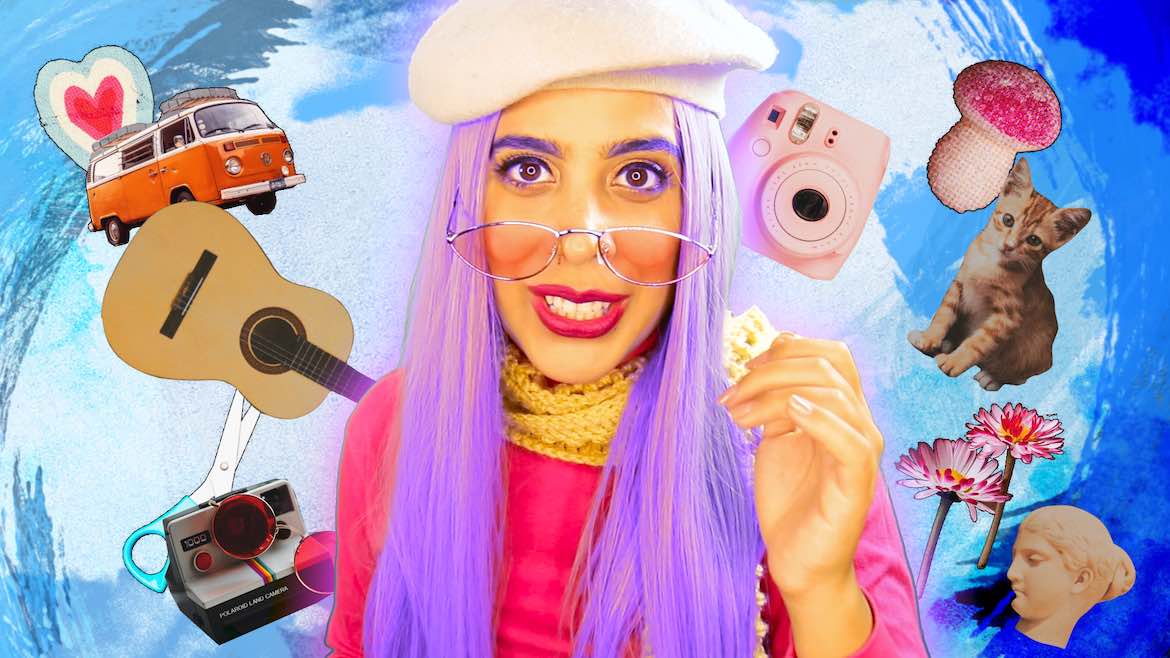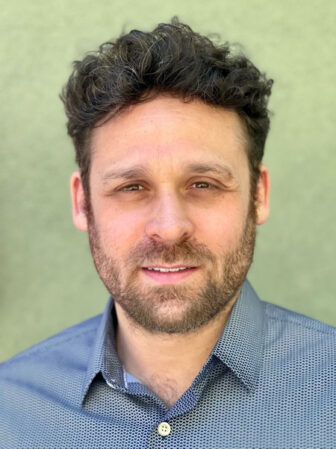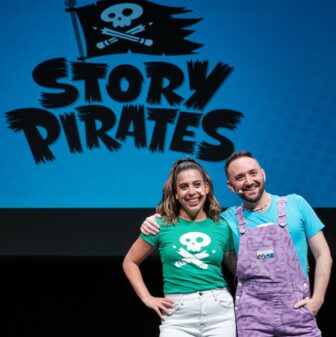Ahoy, Story Pirates! ‘SPTV’ brings creative storytelling to broadcast TV

Courtesy Story Pirates
Alex Nader, host of "SPTV," gets creative in an episode from the series' second season.
Ask any parent or caregiver of a school-aged kid, and they’ll know the name Story Pirates. Born from a New York sketch comedy show based on stories written by real kids, Story Pirates began as an arts education organization, performing shows and hosting creative writing workshops at schools in the metro area. That starting point, co-founder Benjamin Salka says, is how the group honed its “incredibly high energy, high comedy style that made kids feel like Saturday Night Live was taking over their English class.”
Thousands of live shows and more than 60 million downloads of a wildly successful podcast later, Story Pirates is expanding into public television with Story Pirates Presents: SPTV, a show that attempts to channel the collective’s kid-friendly energy and passion for writing into bite-sized chunks of 15-minute episodes. Camp TV, the summer learning series produced by the WNET Group, featured SPTV this year, but the public TV show originated through conversations with KLCS in Los Angeles in 2020. SPTV currently airs on KLCS; WNET in New York City; WTCI in Chattanooga, Tenn.; and the Michigan Learning Channel. Salka and the Story Pirates crew hope to expand farther, and are currently working on filming a third season.
Like so many creative things, SPTV had its origins during the pandemic. Salka estimates that Story Pirates was probably doing about 3,000 live events a year pre-COVID, including “shows that we did in theaters, [and] workshops we did in schools, after-school programs, and community centers.” That all came to a screeching halt in March 2020 when schools and public gatherings went virtual.
COVID restrictions created a whole new set of problems for educators and groups like Story Pirates. How would they reach households where computers and internet access were lacking? “When the pandemic hit, as a society we really got to see the digital divide,” says Story Pirates educator and SPTV host Alex Nader. “If families didn’t have computers or laptops or access to the internet, they couldn’t virtually teach their kids the same way that families that had access to those things could.”
‘Instant mandate’

That’s around the time that the Los Angeles Unified School District, licensee of KLCS, got in touch, Salka recalls, asking if Story Pirates would be interested in creating some sort of video programming. District officials told Salka something he already suspected: most families who fall into the digital divide have TVs and are active and avid viewers of public television. “PBS stations all of the country, all of the sudden, were in a position to be able to provide educational content for kids who weren’t able to connect to Zoom,” Salka said. He called the push to create more programming “sort of an instant mandate.”
The Story Pirates team met with managers at KLCS and started thinking about how they could translate their zany live show into an at-home experience. Fortunately, it seemed like a pretty natural fit. “We sort of lucked out,” Salka says. “We had lots of experience as a theater company, a growing expertise in producing audio, and a limited amount of experience producing video. But fortunately we had this guy, Andrew Barbato, who’d joined the company as an actor … and was blowing us away with his ability to create really incredible looking content on a shoestring budget.” They approached Barbato, who happened to be roommates with Nader at the time. Together the pair set about producing the first season in their apartment. With Nader as the star actor, Barbato shot, directed and edited the episodes. Creative Director Lee Overtree wrote most of the first season.
Creating the show involved harnessing what Nader calls the “broad, very presentational” Story Pirates style. Years of producing shows for schools had trained her and others to “project out to the universe.” She jokes that her work has been “forged in cafetoriums.”

Nader and Barbato were working with limited space and resources to produce the first 20 episodes of SPTV. KLCS had sent a camera and a green screen, and that was about it. The circumstances forced the pair to find what she calls “really artistic means of success.” That meant presenting the material out and to the camera, playing directly to the kid at home watching the show. They decided to produce 15-minute episodes, in part because Story Pirates just didn’t have the bandwidth to produce anything longer. And KLCS had another 15-minute show in the works that they could pair up with broadcasts of SPTV. The show debuted on KLCS in December 2020.
“We were told to anticipate that there may be some stations that needed us to do a half-hour format,” Salka says, “but they can just double up on our episodes. We’re filming season three now. By the time we’re done with that, we’ll have 52 episodes, so that’s a pretty substantial amount of content.”
‘Goofy permission to be weird’
The show’s length wasn’t really an issue for Gillian Gainsley, strategic planning director at Detroit Public Television and the Michigan Learning Channel, which airs SPTV during a three-hour block of after-school programs. The channel, broadcast by six PBS stations in Michigan and WNIT in South Bend, Ind., launched during the pandemic as a way to reach kids who lack internet access at home.
In Michigan, about one-third of K–12 students don’t have access to reliable internet service at home, Gainsley says. Even those whose families do have high-speed internet service might not have access to their own device. “We had a big struggle in Michigan in the early part of the pandemic in terms of getting adequate devices and internet access into students’ hands. We wanted to overcome that struggle by putting everything that’s on the device in your living room.”
Robyn Stringfellow, manager of educational content and services for WCTI, says that her interest in SPTV grew from a similar struggle. “Our area has significant poverty and disparity, especially along racial and economic lines, so PBS as a broadcast network is very important,” she says. “In the housing projects and rural areas that we serve, they don’t have satellite dishes or anything like that. They’re just watching broadcast television.”
Additionally, a significant portion of families in WTCI’s service area opt out of public schools and homeschool instead, Stringfellow says. WTCI Educate, a multicast channel that combines K–12 education programs and news and documentaries, airs back-to-back episodes of SPTV twice each weekday, at 6 and 10 a.m.
“One of the reasons we chose to air SPTV is because it can provide parents support and some scaffolds for teaching creative writing and storytelling, which … some parents might not feel equipped to do,” Stringfellow says. “We’ve also tried to put it at a time of day where non-traditional students can interact with the material before the school day. … Hopefully we’re going to start putting it in the afternoon as well.”
Calling the show “very public television,” Stringfellow says SPTV helps her reach elementary or early middle-school students who may have aged out of PBS Kids programming. “It’s creative, it’s collaborative, and it has that goofy permission to be weird … that can encourage people to be themselves.”
Gainsley of the Michigan Learning Channel agrees. Kids like the show because it uses “upper elementary-school silliness and fart jokes,” she says, which keep kids in that age range engaged.
SPTV also offers educational materials to support what kids see on the show, something that students and teachers both appreciate, Gainsley adds.
Those materials and the show’s reach have helped Story Pirates touch more kids than ever, Salka says. “We’ve had a strong presence in New York and L.A. for years, but if a school in Minnesota or in Detroit wanted to bring Story Pirates there, it’s tens of thousands of dollars worth of plane tickets, hotels and local transportation just to make it possible, which is basically prohibitive,” he explains. “It’s been such a boon for us to be able to reach people all around the country with SPTV.”
“There … are a handful of shows that public television has launched over the years that are some of the best shows in the history of kids’ television, like Sesame Street,” Salka says. “Without putting ourselves in that category, … there’s something really exciting about being an educational media company that’s part of that lineage. It’s incredibly gratifying to be in an environment that has supported some of our favorite shows.”
Correction: An earlier version of this article incorrectly credited key talents involved in creating the first season of SPTV. Most of the episodes were written by Creative Director Lee Overtree, while Barbato shot, directed and edited them.






